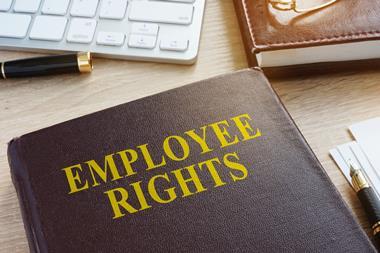Martin Hudson, general manager of St Paul, wants insurers to start preaching some harsh truths. “We have shielded our customers from the costs of liability for too long, and that shield is now being removed,” he says.
Brokers and customers should brace themselves for a correction in employers' liability (EL) and personal liability (PL) rates, which he believes is long overdue. Political and social trends have empowered the consumer and the EL debate is hardening rates, but also insurers' patience.
“We must stimulate the debate on what we pay out in EL and PL cases,” he says. “There is definitely a compensation culture – this isn't a matter for insurers. Our country's democracy has mechanisms to decide whether we want a compensation culture or not. There will be a consequence – insurance premiums are going up and it has to do with the amount of compensation we as individuals now expect to get for negligence cases.”
Higher expectations
St Paul is well aware of the expectations of the customer. Some of its largest clients are the privatised UK rail companies and only last month it began compensating the Paddington rail crash victims. In total, payouts stand at £10m so far.
Hudson understands the consumer is more politicised and litigious, as access to justice is becoming privatised.
“Justice has been privatised, based on the model that the structure of state-funded legal access has become more ‘sort it out yourself', using insurance policies or whatever,” he says.
Every successful action means a reduction on discounts and “little insidious changes” are inevitably pushing the cost of liability insurance as a whole. Social change over the past decade has converged with the downward trend in rates since the price wars began back in the mid-1990s – forcing insurers to place the burden on brokers and customers.
“EL, as a market, is currently worth £900m. In my mind, that should be £2bn at today's loss cost,” says Hudson. “Because of the political and social trends, EL's inflation is around 10% to 15%. A £100 claim this year means by next year it will be £115. So in order to stand still, we must increase the rate. My feeling as an insurer is that, once we have delivered the correction, we will be looking for annual rate increases above the inflationary rise.”
He adds that the rail companies have already been hit this month with a big increase on rolling stock insurance and there are big increases to come on the EL policies.
Norwich Union's director of underwriting, John Seaton, says EL rates, and rates in general, must rise. “We are re-assessing the whole market and rises of a flat 25% are going to be standard. Annual increases will be the norm from now on,” he says.
Both men brush aside any worries over the growing capacity crisis gripping the market.
“We are coming out of the ditch and we are moving towards an underwriting high,” says Hudson. “It's not driven by a lack of capacity – there is plenty of capacity – but by crap results. And the absolute imperative from shareholders' perspective is to do something about it. There is an absence of profitability, not capacity. That is driving behaviours.”
The long line of shameful events over the past months with Chester Street, Drake Insurance, Independent Insurance and Equitable Life has tarnished the industry.
Seaton says the events have been “disappointing” and has dragged the share price and credit ratings of the major insurers down, but “it will all come out in the wash, eventually”.
Hudson puts the onus back on the broker. “The Independent business will be re-broked and it will help the pricing over the next 12 months. Brokers must now take responsibility for where they place their business. That is the thing they can do. Look at the financial security of the businesses they deal with, take advice from the rating agencies. But that's not enough, because they now know there isn't a great umbrella to protect them from insolvencies.”
He thinks brokers must take a view on the adequacy of the reserves and is surprised that he has not, as an insurer, been asked what the state of play is with his company's reserves.
“They should be asking ‘How do you set your case reserves, Martin? Do you have a bucket you put losses in? Do you have a mechanism for rationing your losses?' – these are the questions, but nobody asks them. They should be asking me and everyone else.”
Climatic changes
Hudson and Seaton are in agreement that climatic changes are the greatest challenge to the modern insurer. The flooding issue in the UK will push premiums up but both deny any one area, such as Lewes in Sussex which some brokers believe is uninsurable, will become dead zones for the industry.
“No one area is uninsurable. New policies, customised or at varying premium rates, will be introduced,” says Hudson.
Seaton thinks a sense of foreboding has enveloped the underwriting market. “I think liability insurers are nervous about their results. Everyone is suffering. We are not on our own, and people are cautious about writing too much.
“However, the customer will still be there. Customers need the cover. If we see 25% rate increases this year, then it will continue for sometime yet.”
Hosted by comedian and actor Tom Allen, 34 Gold, 23 Silver and 22 Bronze awards were handed out across an amazing 34 categories recognising brilliance and innovation right across the breadth of UK general insurance.











































